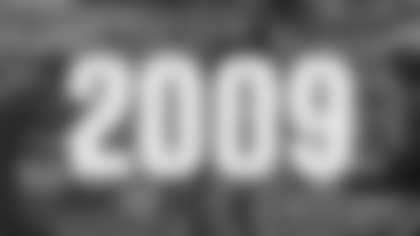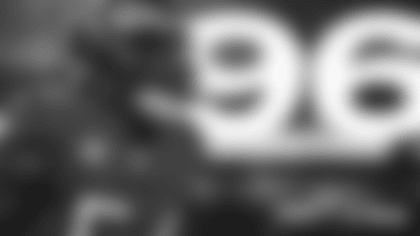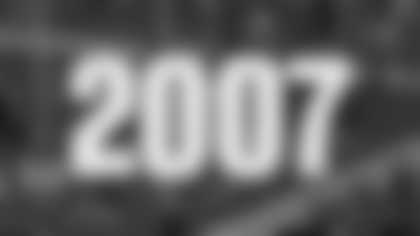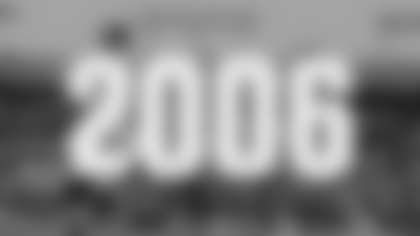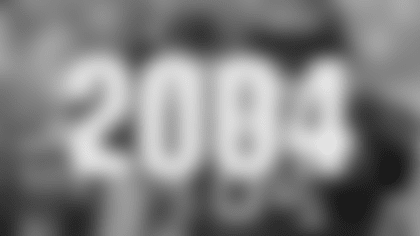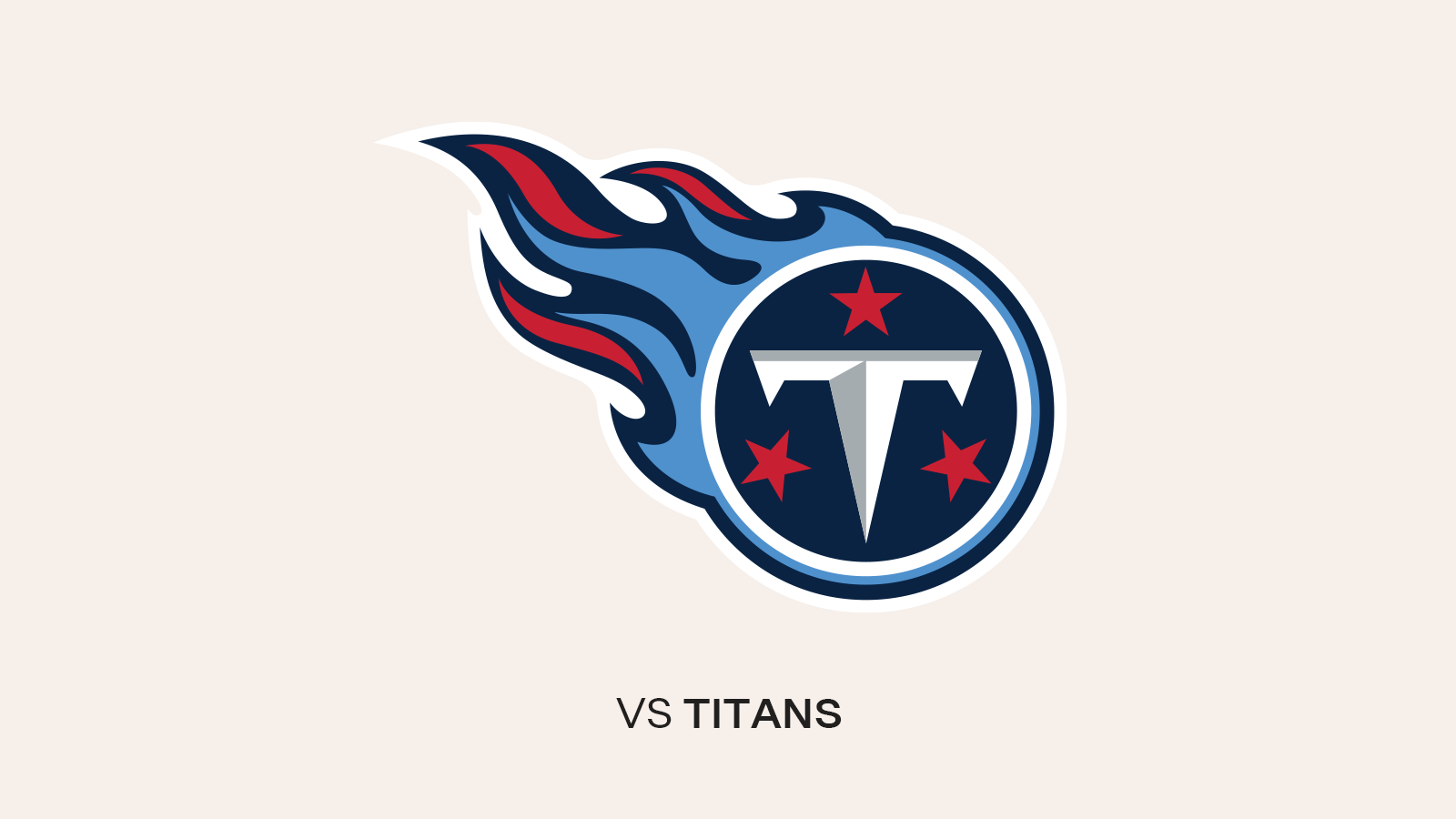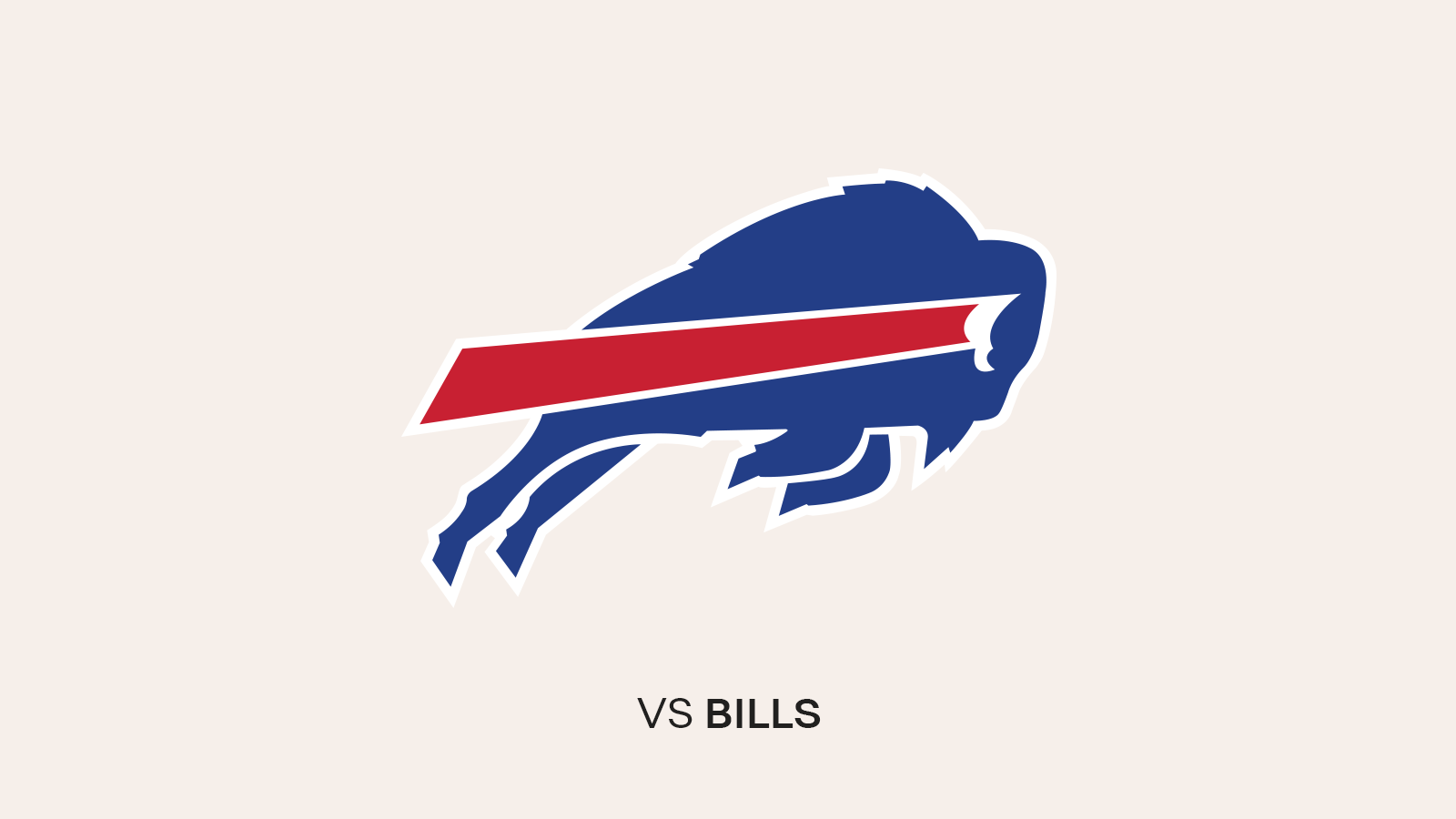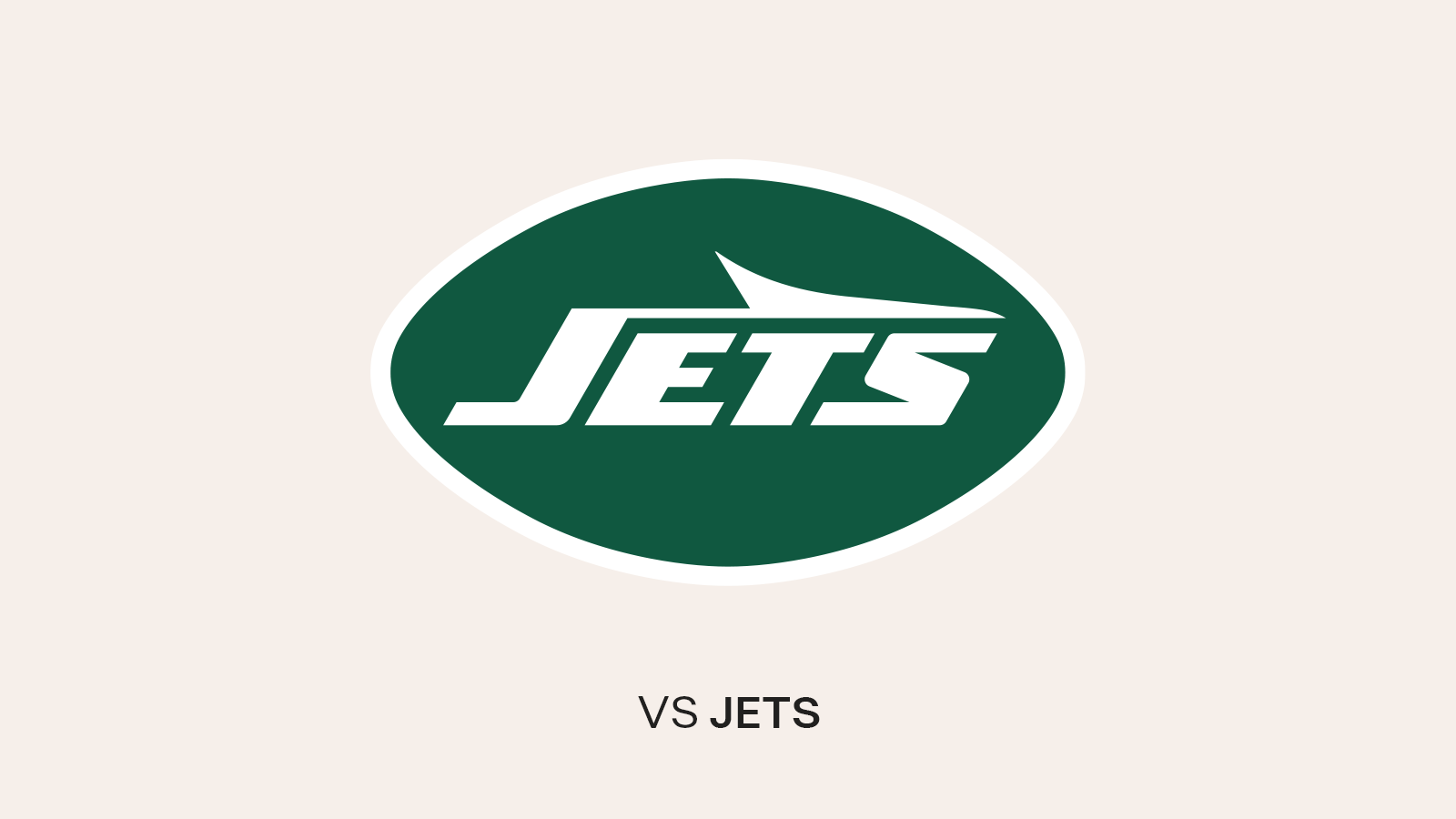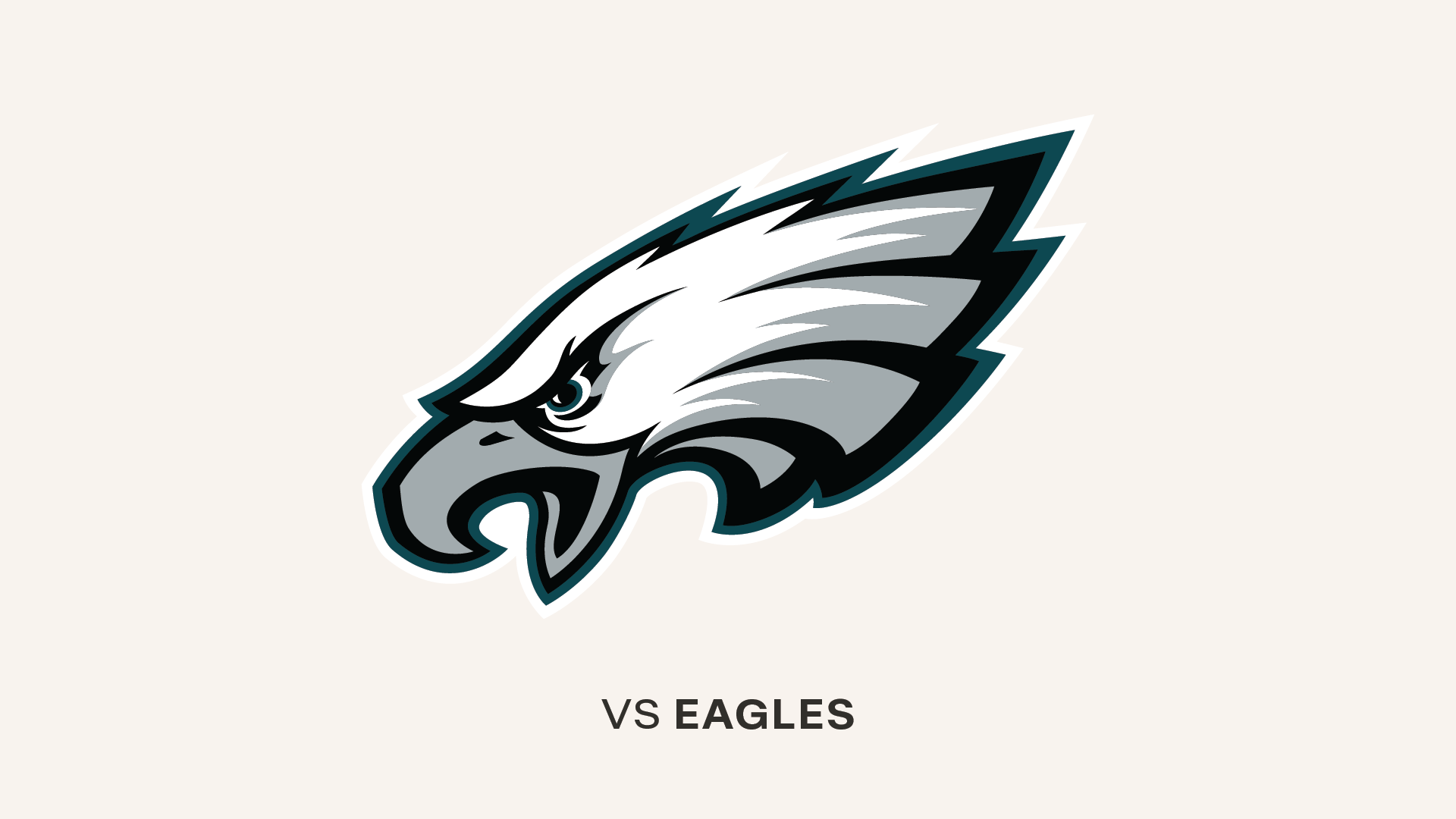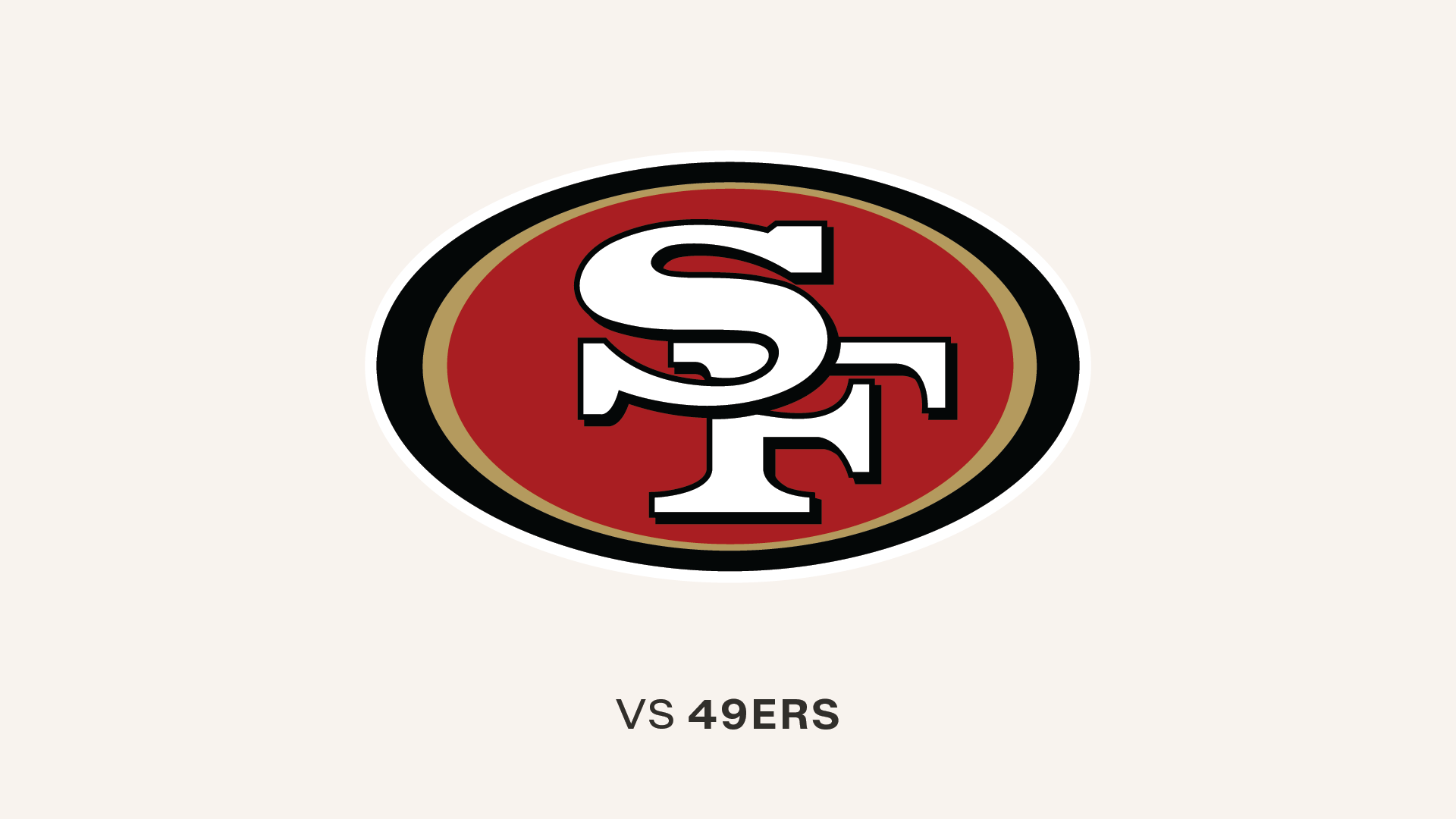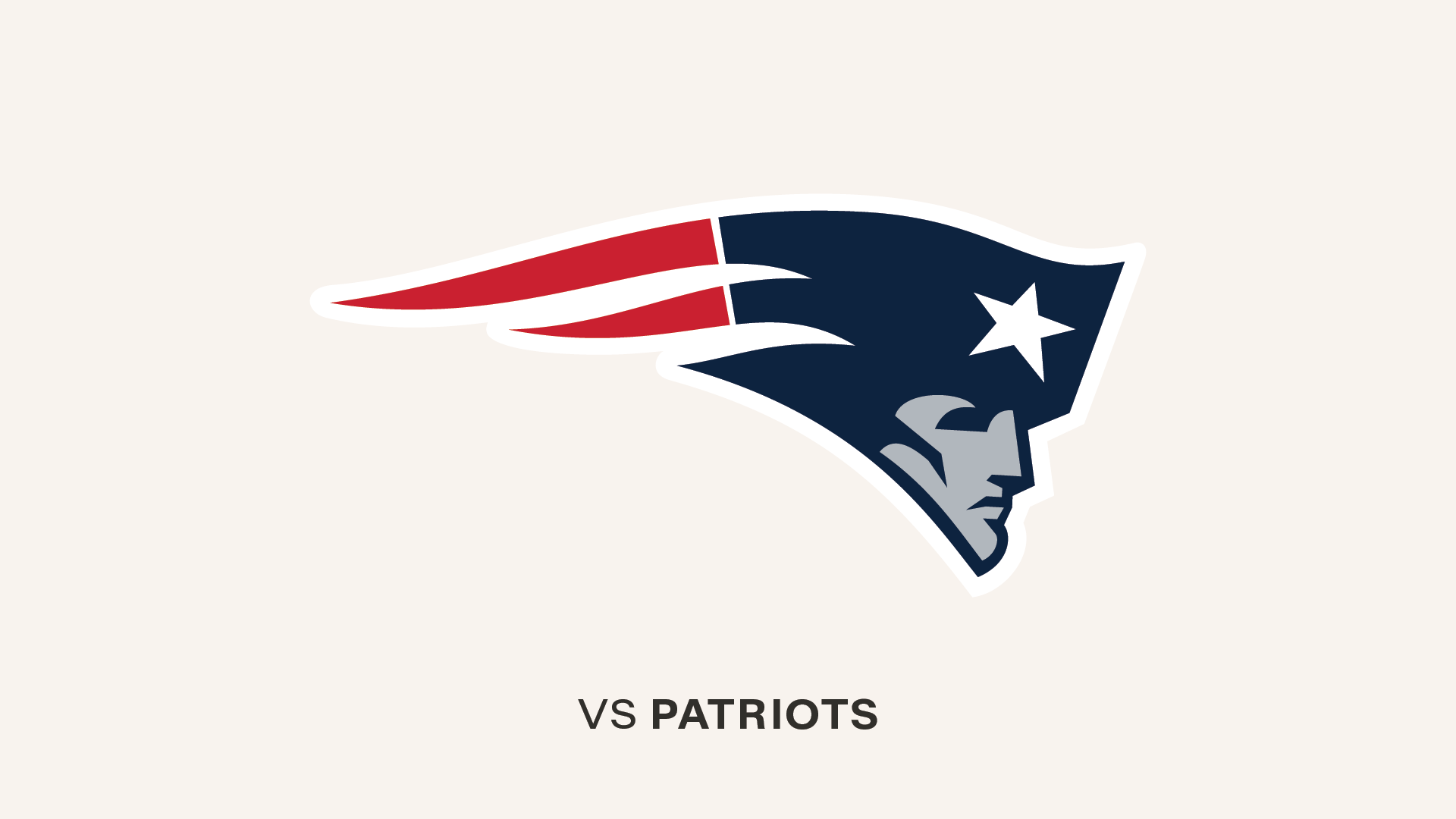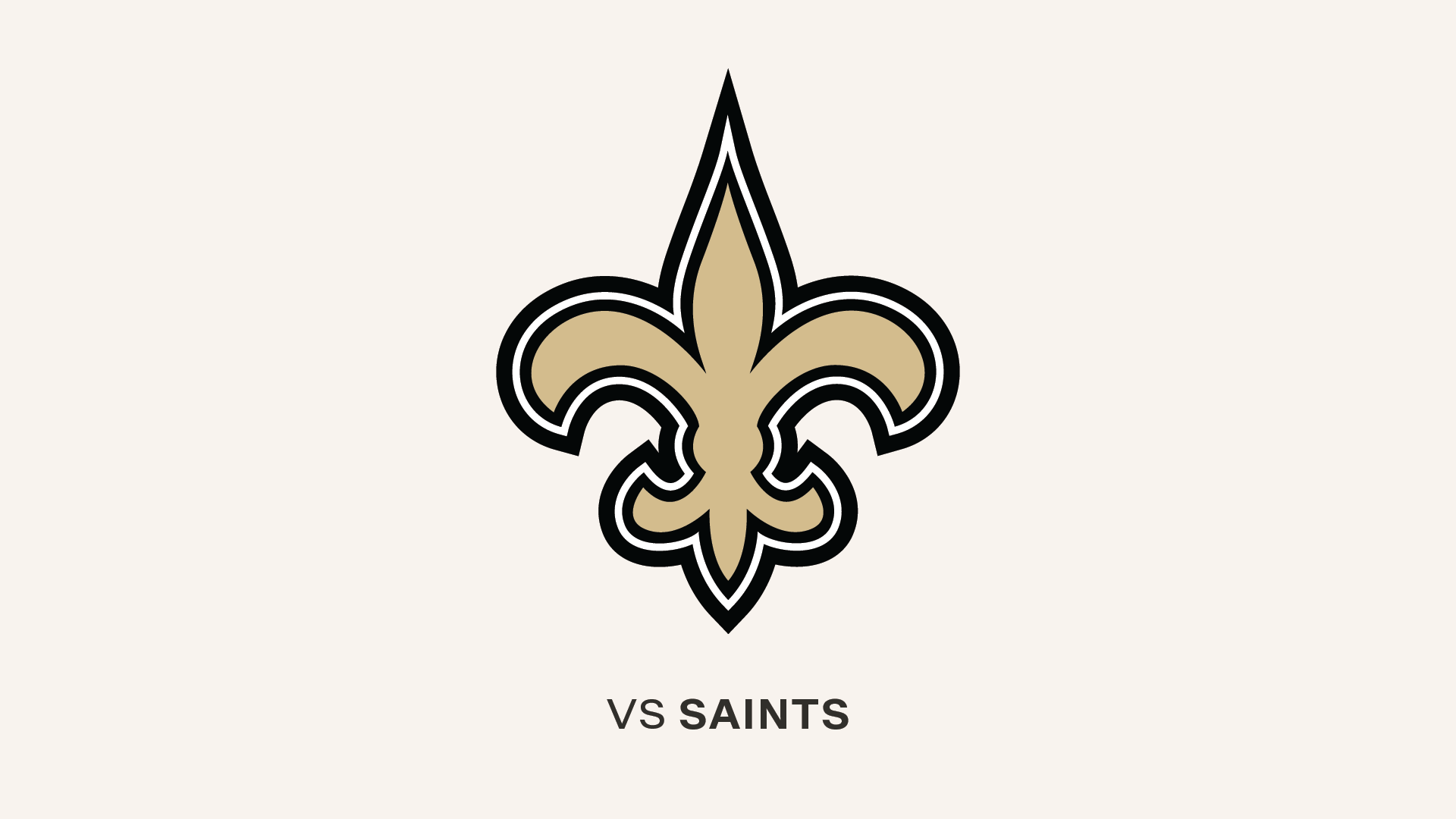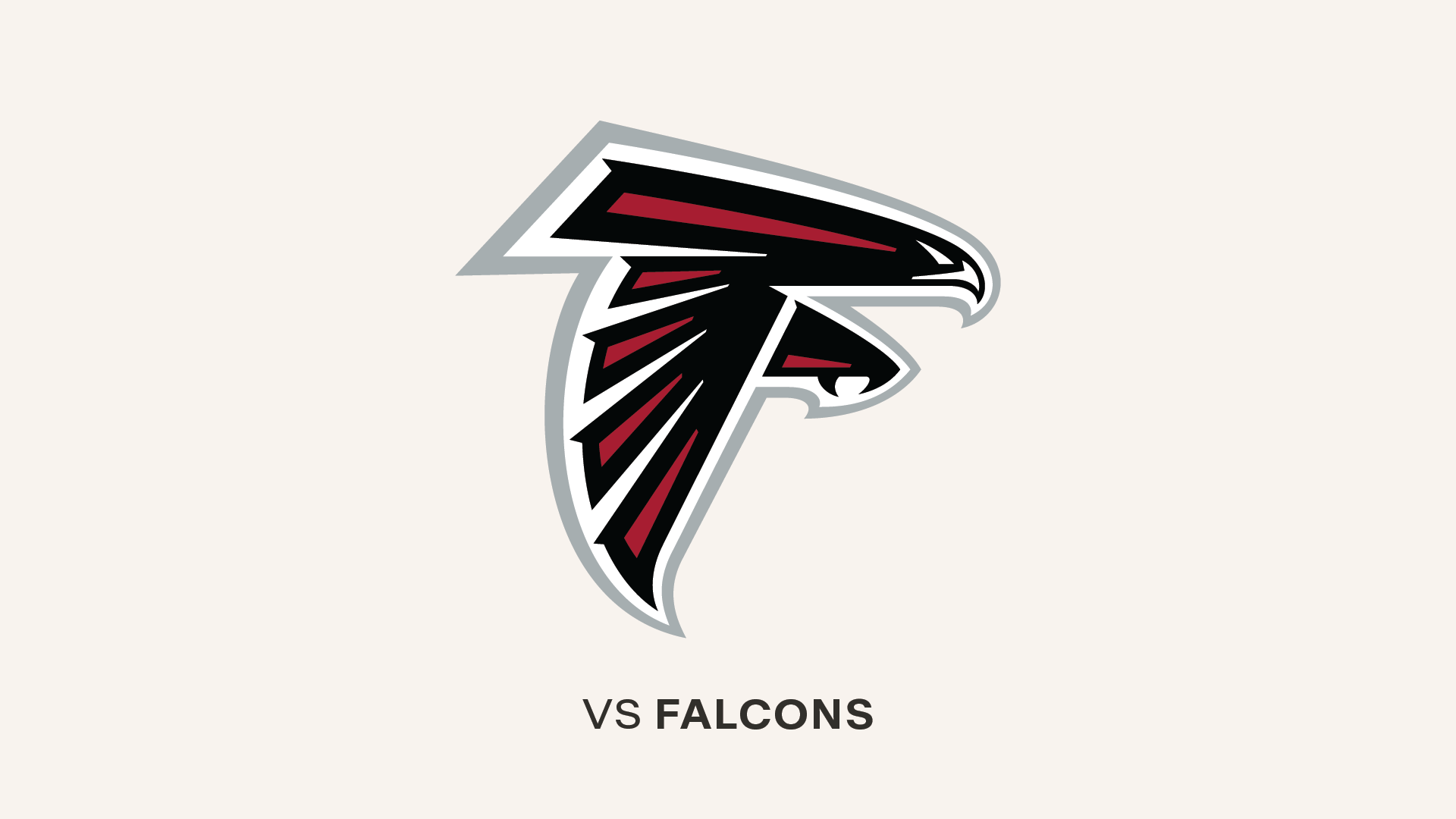Earlier this year I answered a few questions regarding where in the draft the Buccaneers had picked certain players in previous years. In an attempt to be thorough, I put all the picks from each of the team's first 35 drafts into a spreadsheet, with a row for every overall draft slot (1 to 460, since 460 is the latest pick the Bucs have ever made).
That allowed me to see the spots in the draft where, by nothing more than chance really, the Buccaneers have groupings or voids of picks. For instance, the two most common draft spots at which Tampa Bay has picked through the years are 34 and, weirdly, 254.
The 34th spot has yielded the Bucs WR Jacquez Green, RB Errict Rhett, LB Demetrius DuBose, RB James Wilder and WR Gordon Jones. The 254th pick has produced five Buc picks, too, though you won't find all of the names as memorable: WR Aaron Lockett, LB Elijah Alexander,, TE Mike Busch, K Jim Gallery and DE Ken McCune.
Well, now I've updated the chart to include our 2011 picks, and I can see that two more of those draft hot spots were hot. TE Luke Stocker became the fourth player the Buccaneers have drafted at pick #104 overall, while TE Daniel Hardy became the fourth man the team has selected at #238 overall. The most prominent player previously picked #104 by the Bucs is probably WR Horace Copeland, with apologies to C Todd Washington. Hardy could easily become the top #238 in the Bucs' books; right now I'd go with DE Hasson Arbubakrr, if for no other reason that he has a name that's easy to remember (and he actually played one full season, whereas fellow #238ers Cory Boyd and Bruce Welch did not make the team).
If you ever want to spend a few hours perusing NFL draft history, I recommend this site: drafthistory.com. They've got no affiliation with the Bucs, but man, that is a useful site. Every pick in NFL history, dating back to the inaugural 1936 draft, and fully sortable in a variety of ways. One sorting option they just added this year was "Nth player," which means you can see every player drafted at any specific number of pick, from 1 to 487. There is only one player ever selected 487th overall – WR Kelvin Kirk by the Steelers in 1976. With 17 rounds and two expansion teams getting extra picks (including the Bucs), that draft was insanely long.
Anyway, I clicked on the 238th pick as a way of double-checking my work, and noticed two pretty prominent names that have been nabbed at that overall spot: DE Raheem Brock and DE L.C. Greenwood. Brock has been a pretty good pass-rusher for Indianapolis and Seattle, and Greenwood was a member of the NFL's 1970s All-Decade Team. There's your bar to clear, Mr. Hardy.
Only one of this year's draft picks is virtually guaranteed to be the best Buccaneer ever from his draft position by season's end. That would be sixth-round RB Allen Bradford out of USC. Bradford is the first player the Buccaneers have ever drafted 187th overall.
Yes, I know that none of this is particularly significant. It's just a fun mental exercise for me, and a way for you to be reminded of some of the players in the Bucs' past. You've probably had enough of that by now, though…let's get to your questions!
**
1.Kassy of Chicago, Illinois asks:
Is it possible for a player in the NFL to actually be on a team and be part of the team without ever being on the official roster?
Answer Man: Well, Kassy, it really depends on what your definition of "on" is. Or, to be more exact, it depends on what the team in question decides what the "official roster" is.
Let me use the Buccaneers as an example. They have a roster all year, and there is nothing unofficial about it any point. During the offseason and into training camp, that roster is usually about 80 players strong. Every player on the roster has a very real NFL contract, at least by the time training camp starts and the draft choices are signed. If you were one of those players on the roster in, say, May, you would have every right to say you are a Tampa Bay Buccaneer.
For the regular season, the Buccaneers have to trim that roster down to 53 players. They can also carry up to eight practice squad players. A good number of those 80 players who had contracts in the offseason have to be released, and when the season begins they are not on the team or on the roster.
Here's where the official part comes in, at least for the Buccaneers. To be considered a part of the team's all-time roster – the list of every player who has been on the team at some point in its history – you have to be on the 53-man roster for at least one regular-season or postseason game. You don't have to actually play in a game; you simply have to be one of the 53 men the team takes into that game day. A practice squad player is NOT one of those 53, and will thus not be part of the all-time roster unless he subsequently makes the active roster.
Here's the thing: Those rules are fairly arbitrary. Essentially, it is the Buccaneers themselves who have decided this standard for making the all-time roster. They have decided that is what is fair. They could just as easily say that you have to actually play in a game, or at least be one of the game-day actives, in order to be recorded on the all-time roster for the rest of posterity. As an example, rookie defensive end George Johnson was promoted to the Bucs' active roster last December and he was on the 53-man team for the last three weeks of the season. He was actually one of the Bucs' eight game-day inactives for each of those three games, so he has yet to play an NFL regular-season game. He was added to the Bucs' all-time roster at the end of the year, however. If the standard was actually playing in a game, Johnson would not yet be on that all-time list.
Every team in the NFL keeps an all-time roster. You can see the Bucs' version through the 2009 season in the 2010 media guide by clicking here. It's possible that other teams in the NFL use different standards; in fact, the Answer Man thinks it's likely though I confess not to know for sure.
But the Answer Man also thinks it's likely that every team requires a player to at least make the 53-man roster before he can be eligible for the all-time roster. Those players who are signed during the offseason but do not, in the end, make the team for the regular season are not put on the list. Again, they are every bit as significant as the other players on the roster during the offseason, and they are legitimately members of the team at that point. From a purely clerical standpoint, they just do not become part of the team's lasting history until they make the regular-season roster.
So I would say no to your question the way it is worded: Is it possible for a player in the NFL to actually be on a team and be part of the team without ever being on the official roster? If the player is on the team in the offseason, he is part of the official roster at that point.
However, I think what you might have meant is this: Is it possible for a player in the NFL to actually be on a team and be part of the team without ever being on the official all-time roster? Then the answer would be yes. A player could be ON the team in May or even August, but not on the all-time roster unless he makes the team in September.
I should also point out that the Buccaneers sometimes hold a rookie camp in which a good number of the participants are players who are in town on "tryout contracts." I think it would be fair to say that those players are on the team for a couple days without actually being on the official roster. I don't think that's what you were asking about, however.
If I failed to get at what you really meant by that question, Kassy, please feel free to send me clarification.
**
- Cassidy of the Eglin Air Force Base in Valparaiso, Florida asks:
All the articles about draft grades lately are getting on my nerves. They are just giving grades based on predictions. I want to see grades based on some facts. And I know just the man to go to for facts. So how about you grade some of the Bucs and other NFL teams' past drafts. I was thinking that it would take plenty of research and I know how much you love that.
Answer Man: You know, I said at the end of my last column that I would consider tackling this one, but I was a little unsure about it. Frankly, I still am. This all seems very arbitrary to me, even with the advantage of perspective that time has given us if we were to address, say, the 2005 draft.
Honestly, I don't want to do it, despite the pure, unrelenting joy that grinding research would bring to me (gee thanks, Cassidy). But there's the thing (I say that a lot, don't I): When I mentioned Cassidy's e-mail in my last column, I mentioned some nonexistent place called the Elgin Air Force Base. EL-gin. Dang it, it's Eglin, not Elgin. I didn't get any angry e-mails about that; I just noticed it myself. I've since fixed it, but I can't pretend it wasn't there for awhile.
I hate the thought that I was disrespectful to the fine servicemen and women at Eglin AFB. It was an accident, but it still makes me unhappy. So I apologize for that mistake, and as atonement I will take a crack at Cassidy's question.
I must say again, though, how arbitrary this is. First of all, since there are 32 teams and 76 NFL Drafts, there is an almost endless number of potential draft classes to analyze. Obviously, I'm going to have to arbitrarily pick some particular year or group of teams. More to the point, however, is that whatever grades I assign are nothing more than one man's opinion. They won't really mean anything; hopefully they will have some entertainment value. I know you said you want grades based on facts, Cassidy, but I don't think it's as simple as that. Sure, there are some ways in which facts have replaced opinions since, say, the 2005 draft.
For instance, there were opinions all the way back on draft weekend of 2005 that Minnesota's choice of South Carolina wide receiver Troy Williamson at #7 overall was a reach. Now, it's fair to say that it's a fact that Williamson has just 24 career starts and 87 career catches and did not play in 2010. On the other hand, it is still a matter of opinion whether Braylon Edwards as the third overall pick in 2005 was a good choice or not.
(And that, ladies and gentlemen, is how you pad your word count by 400 without even beginning to answer the question. Don't try this at home; I'm a pro.)
(But wait…I'm still not done!)
Before I start handing out the grades, please allow me to partially echo your sentiments about draft insta-grades. You say they're all based on predictions, and I would agree but go even further. I have long felt that draft grades are nothing but circular reasoning. Teams commonly grade out well when they get good "value" for their picks, and grade out poorly when they "reach" or "overdraft."
And how do you get value for a pick? You take a player lower than where he commonly showed up in all the mock drafts. The Answer Man has used this example before, but it bears repeating. In 2006, the Buccaneers took Davin Joseph in the first round and Alan Zemaitis in the fourth round. The team got a lot more praise for the Zemaitis pick than they did for the Joseph pick, because Zemaitis was thought to be a likely third-round pick while Joseph hadn't shown up in anybody's first-round mocks.
As it turned out, Joseph developed into a Pro Bowl guard while Zemaitis never played a game in the NFL. Of course, I didn't know that immediately after the draft, and neither did anyone covering the NFL. The Buccaneers certainly believed Zemaitis was worth a fourth-round pick back then. It's very difficult to predict which players will live up to their scouting reports and which will not, and that's why grades handed out immediately after the draft are mostly meaningless.
To their credit, most analysts know and acknowledge this point, or at least they have increasingly acknowledged it in recent years. The thing is, articles grading the draft immediately after the fact are still interesting to read, at least in the Answer Man's opinion. I know they're probably meaningless, and yet I read every such article that I can find. They're fun. It's entertainment. I hope the writers keep right on doing it, year after year.
Even the best football writers are really just throwing darts at that point. Paul Zimmerman of Sports Illustrated was widely considered one of the most knowledgeable football writers and a draft expert. Here's what he said about the Buccaneers' efforts right after the 2006 draft:
"As a pair, I like choices Nos. 3 and 4 better than Nos. 1 and 2. First choiceDavin Josephis a top-grade guard, but the second pick, TJeremy Trueblood, is a 6-8 string bean who was tied for sixth weakest among the 44 linemen who participated in the combine's grunt and heave, a.k.a. bench press. Third-round WRMaurice Stovallis a big guy who I predict will really be productive in this offense, and CBAlan Zemaitis(fourth round) is made forMonteKiffin's cover-two defense."
Joseph and Trueblood essentially became immediate starters on the line and remained there through much of 2010. Stovall is also still with the team and has been a valuable contributor, but it would be a stretch to say he has brought more value than Joseph or Trueblood. Zemaitis, as mentioned, did not work out.
Again, I'm not picking on any analysts, and especially not the well-respected Zimmerman. That's just an example of how little stock we should put in immediate post-draft analyst. Read it, enjoy it, but take it with a grain of salt.
Which I guess is basically what Cassidy was saying, so I should probably get to the part where I actually answer the question, right? (Any chance I could just exit gracefully right here and go on to the next question? No? Okay. Worth a try.)
As I said, there are any number of potential draft classes to evaluate. You wanted me to look at previous Buccaneer draft classes and/or other teams. Let's do this: I'll evaluate all of the Bucs drafts during the 1990s, since the only player still on the team from those draft classes is Ronde Barber. Then I'll take one more recent season and hand out some arbitrary grades for each of the other teams. Hey, we were discussing 2006; how about that one? Five seasons should be enough time for us to have a good feel for the fortunes of most players drafted that year.
Remember folks: Entertainment! As Rebecca Black would say, Fun. Fun. Fun. Fun.
Don't take this seriously. If I say something less than glowing about the draft efforts of your second favorite team (because the Bucs are #1, right?) please don't take offense. Remember the source. I'm the Answer Man – I've made a living digging up answers to Bucs-related and occasionally NFL-related questions through the years. I've always left this sort of analysis to the experts, like Zimmerman. Take this with two grains of salt, just to be safe.
Okay, Buccaneer drafts from 1990-1999:
1990: LB Keith McCants, RB Reggie Cobb, TE Jesse Anderson, C Tony Mayberry, G Ian Beckles, RB Derrick Douglas, DE Donnie Gardner, DE Terry Cook, TE Mike Busch, WR Terry Anthony, QB Todd Hammel.
Wow, a tough one right off the bat. How do you evaluate this with a single grade when the first pick is a real swing-and-miss but the middle rounds bring a ton of value. I'll say B-, because you just can't ignore the miss at #4 overall. The Bucs took McCants right between Cortez Kennedy and Junior Seau, to give you an idea of what teams hope to get that high in the first round. McCants did not work out at all, though that pick was one of a series of such selections that helped push a sea change in the Bucs' overall approach to the draft, emphasizing actual production over potential. That said, Cobb was a productive runner for several years and both Mayberry and Beckles started for a long time on the offensive line. Mayberry, in particular, was a strong pick for the fourth-round, starting non-stop from 1991-99 and making three Pro Bowl squads. After Beckles, however, the Bucs got essentially nothing from the sixth round on, so no late help for the overall grade.
1991: T Charles McRae, WR Lawrence Dawsey, FB Robert Wilson, S Tony Covington, LB Terry Bagsby, G Tim Ryan, DT Rhett Hall, LB Calvin Tiggle, S Marty Carter, WR/KR Treamelle Taylor, QB Pat O'Hara, RB Hyland Hickson, DT Mike Sunvold, LB Al Chamblee.
I almost went with another B- here, for slightly different reasons, but I think I'll have to lower it to a C+ because the Bucs also traded a second-round pick to get San Diego RB Gary Anderson the year before. Anderson wasn't terrible, but his 464 rushing yards in 1990 were his high as a Buccaneer and he was clearly near the end of his career. What is the same as in 1990 is the poor returns from the first pick. McRae was taken seventh overall and expected to be a bookend anchor with 1988 first-round pick Paul Gruber. The Bucs gave him several years and a bunch of different spots on the line to try to catch on, but McRae never did. Tampa Bay did get good value out of Dawsey in the third round. The Florida State receiver had slipped due to a lack of top-end speed, but he had 55 catches as a rookie and 60 the year after. The rest of the draft produced a pretty long list of guys who made the team and were decent right away but whose careers were pretty short: Wilson, Covington, Ryan, Hall, Tiggle, Carter and even Chamblee. Covington and Carter became the team's starting safeties right away but while Carter played four seasons and started 55 games, Covington's career was marred by injuries after 1991.
1992: WR Courtney Hawkins, DT Mark Wheeler, TE Tyji Armstrong, QB Craig Erickson, CB Rogerick Green, DT Santana Dotson, LB James Malone, S Ken Swilling, FB Anthony McDowell, QB Mike Pawlawski, LB Elijah Alexander, RB Mazio Royster, P Klaus Wilmsmeyer.
You know what? B+. That's right, B+. You may think I'm overvaluing this class, as there isn't really a star in the bunch (unless you add in Dotson's post-Bucs career in Green Bay). But keep in mind that the team had no first-round pick, and it still managed to get solid starters in Hawkins, Wheeler, Dotson, Armstrong and, for a time, Erickson. You can't call it an A, though, because none of those guys became true long-term starters, like a Gruber or a Barber. Wheeler and Dotson became the starting DT duo right away and Hawkins led the team with 62 catches in his sophomore season. He caught most of his passes from Erickson, who kept the QB seat warm between Vinny Testaverde and Trent Dilfer before returning a first-round pick in a trade with Indy. Armstrong wasn't a huge producer in the passing game but he was a ferocious blocker. McDowell was a useful player for three years, Pawlawski logged one year as a backup and Alexander and Royster each played a little.
1993: DE Eric Curry, LB Demetrius DuBose, WR Lamar Thomas, S John Lynch, FB Rudy Harris, WR Horace Copeland, DE Chidi Ahanotu, WR Tyree Davis, WR Darrick Branch, K Daron Alcorn.
C+, and the rest of the class can thank Lynch and Ahanotu for saving them from a worse grade. Maybe any draft that produces a likely Hall of Famer (Lynch) should get a B just for that, but it's hard to get past those first three picks. Curry was basically the last of those failed "potential" picks, DuBose never became the starter the team envisioned and Thomas was only sporadically productive. On the other hand, Ahanotu in the sixth round gave the Bucs the long-term defensive lineman they didn't get in the first round, as did Copeland as a receiver in Round Four. Lynch and Ahanotu raise a potential failing grade to C and Copeland adds the plus.
1994: QB Trent Dilfer, RB Errict Rhett, TE Harold Bishop, T Pete Pierson, LB Bernard Carter, C Jim Pyne.
Have to say B here, because while there weren't spectacular successes here, there weren't many failures, either. Bishop was a complete miss in Round Three but he's still remembered fondly as the trade bait that netted the Bucs a second-round pick in 1996 that turned into Mike Alstott. Dilfer's career might have been a bit up-and-down, but as of now he is the franchise's all-time leading quarterback in terms of both games started and games won. Rhett had two very good years before an ill-advised contract dispute derailed him about the time Alstott and Warrick Dunn were showing up. Pierson and Pyne had decent stints as starters on the offensive line.
1995: DT Warren Sapp, LB Derrick Brooks, S Melvin Johnson, CB Jerry Wilson, CB Clifton Abraham, LB Wardell Rouse, G/T Stephen Ingram, DE Jeffrey Rodgers.
You simply can't push me off an A for this one, given what happened in the first round, but I'll make it an A- since not much of anything was added after that. The Bucs famously traded up and down the board that April to land two players who will almost certainly end up in the Hall, Sapp and Brooks. List the top five players in franchise history and you're almost certain to include both of them. Perhaps one of the best single-round drafting performances in NFL history. Johnson earned a starting job pretty quickly but was shipped to Kansas City in a trade after just three years. Nobody else on the list made any notable impact.
1996: DE Regan Upshaw, DT Marcus Jones, FB Mike Alstott, CB Donnie Abraham, T Jason Odom, S Eric Austin, DT Jason Maniecki, WR Nilo Silvan, CB Reggie Rusk.
B+. Again, it's hard to get too upset with the rest of the draft when it brings two players as outstanding and important as Alstott and Abraham. Some have referred to Upshaw as a bust but the Answer Man has always thought that was a bit strong. He did start 47 games for some very good Buccaneer teams, and he had 18.5 sacks in three years. You certainly don't have to love the pick – he was gone in a little over three years – but it wasn't the worst first-round decision the franchise has made. Jones took awhile to get going but had several huge years after moving to defensive end. Odom was a strong starter and looked like he could nail down right tackle for a long time before his career was cut short by back problems. Maniecki contributed for a few years and Silvan and Rusk got a couple cups of coffee on the active roster.
1997: RB Warrick Dunn, WR Reidel Anthony, T Jerry Wunsch, G Frank Middleton, CB Ronde Barber, LB Alshermond Singleton, TE Patrick Hape, CB Al Harris, WR Nigea Carter, DT Anthony Degrate.
A-. Just a solid draft from top to bottom…or at least top to middle, as neither Carter nor Degrate made it. But Dunn and Barber rank as two of the best players in team history, and Barber is stunningly still going strong. Like Sapp, Brooks and Lynch, he ranks as one of the best players in the NFL at his position in the last two decades. Wunsch and Middleton became solid if unspectacular starters on the offensive line and Singleton and Hape both had nice, long careers. Two things keep it from being a full A: Reidel Anthony did not really prove worthy of the 16th overall pick and Al Harris never got a chance to help the Bucs before shining in Philly and Green Bay.
1998: WR Jacquez Green, CB Brian Kelly, LB Jamie Duncan, C/G Todd Washington, DT James Cannida, S Shevin Smith, DE Chance McCarty.
C+. In the long run, not a lot to show for this draft, though a series of trades that began on this weekend helped the Bucs net an extra first-round pick in 2000, which was then packaged with another first to get Keyshawn Johnson. The Bucs ended up trading out of the first round and nabbed both Green and Kelly in the second. Green had his moments and was a very good punt returner, but Kelly eventually proved to be the more valuable pick. Kelly led the 2002 Super Bowl-winning defense in interceptions during the regular season. Both Duncan and Washington had a chance to step in and replace iconic Bucs – Hardy Nickerson and Tony Mayberry, respectively – but that never quite happened. Cannida and Smith were decent reserves who never developed into anything more.
1999: DT Anthony McFarland, QB Shaun King, K Martin Gramatica, S Dexter Jackson, DE John McLaughlin, FB Lamarr Glenn, G/T Robert Hunt, RB Autry Denson, WR Darnell McDonald.
B-. This one probably looked a lot better two years after it happened than it does now. McFarland appeared to be on the way to stardom early alongside Warren Sapp but his career slowed with some injuries and he didn't end up with as impressive of a Buc career as expected. King had his shining moment late in his rookie season but failed to grab the job long-term in his one full season as the starter (2000). Gramatica is the team's all-time leading scorer; despite a rapid falloff at the end of his Buc career, that's still good value in Round Three. Jackson became a strong starter and was MVP of Super Bowl XXXVII. McLaughlin played a little bit on special teams but none of the other choices made it.
Okay, good thing that didn't take half the day. Now we move on to our arbitrarily chosen 2006 season, where we look at what all the other teams did. That's 31 more drafts to evaluate, so I'm going to call this a speed round. Don't expect lengthy writeups. What I will give you is both a retroactive grade and the grade that Mel Kiper gave each team right after the draft that spring. Not to sound like a broken record, but let me repeat: This is not intended as a slap at Kiper. My grades have the hindsight of five years of actual NFL play. Kiper himself would surely change many of those grades now if he were to re-evaluate, and I surely wouldn't have been any more prescient if I was doing this back in 2006. We're just having some fun.
I'm not listing entire draft classes here, just highlights:
Arizona: Matt Leinart, Deuce Lutui, Leonard Pope.
Kiper in 2006: B
Answer Man in 2011: C-
The difference in how Kiper felt then and how I feel now is what happened with Leinart, thought to be a steal at #10 overall. Kiper also loved the Lutui and Pope picks for their value, but only Lutui really panned out.
Atlanta: Jimmy Williams, Jerious Norwood.
Kiper: C
AM: C-
Norwood has been a decent player, the only thing saving this from being a D. Well, that and the fact that the first-round pick was traded to acquire sack-happy DE John Abraham. Good move. Williams did not work out at all as the 37th overall pick, there were only five players in the class overall and none of the others have done much.
Baltimore: Haloti Ngata, Chris Chester, Dawan Landry, Sam Koch.
Kiper: B+
AM: B+
No reason to change this grade. Ngata is a wonderful player, obviously, a Pro Bowler the last two years and seemingly getting better by the year. Landry has been a great find in the fifth round, a starter throughout his five-year career and a playmaker. Second-rounder Chester has been a solid starter on the offensive line. Baltimore even found its punter, Sam Koch, in the sixth round. Kiper really liked third-round CB Daniel Pittman, who didn't pan out, but the Ravens got some decent returns out of later picks.
Buffalo: Donte Whitner, John McCargo, Ashton Youboty
Kiper: C
AM: C-
At the time, Kiper believed Whitner (8th overall pick) and McCargo (26th) were players who would help Buffalo, but the C reflected his belief that both were taken too high. Now we know that Whitner has been solid but probably not as impactful as a #8 is expected to be, and that McCargo has done almost nothing at all. Youboty has just seven starts and one interception through his first five seasons. A few later picks worked out pretty well, however, including safety Ko Simpson.
Carolina: DeAngelo Williams, Richard Marshall, James Anderson, Jeff King
Kiper: C
AM: B+
Kiper didn't think the Panthers necessarily hit the right needs (most notably WR). However, Williams has been extremely productive, Marshall became a strong starter at cornerback and Anderson has recently developed into a productive starter at linebacker. King has produced well for a fifth-round pick.
Chicago: Danieal Manning, Devin Hester, Mark Anderson.
Kiper: B
AM: B
No first-round pick, but Manning has been good as a starting cornerback and a kick returner. Hester, of course, quickly became one of the most prolific return men in NFL history and is now a somewhat dangerous receiver. Anderson never quite matched his 12-sack rookie season but has been a fairly productive player for a sixth-round pick.
Cincinnati: Johnathan Joseph, Andrew Whitworth, Frostee Rucker, Domata Peko.
Kiper: C
AM: A
The Bengals didn't miss at all in their first four picks, and that's going to get you a good grade every time. Joseph might not quite be a star at cornerback, but he's been very good and could be quite popular if he hits free agency before this season. Whitworth and Peko have settled in as starters on the offensive and defensive lines, respectively, and Rucker has been a good reserve.
Cleveland: Kamerion Wimbley, D'Qwell Jackson, Jerome Harrison.
Kiper: B
AM: B+
Kiper loved the Wimbley pick but that's not alone what makes this draft five years later. Wimbley has been pretty good, though his 11-sack rookie season remains his high-water mark and he is now with the Raiders. Jackson was considered one of the league's best inside linebackers after just a few years of starting, but he has missed most of the last two seasons due to arm injuries. The Bengals found good value for their backfield with RB Jerome Harrison in the fifth and FB Lawrence Vickers in the sixth and LB Leon Williams has provided quality depth.
Dallas: Bobby Carpenter, Anthony Fasano, Pat Watkins.
Kiper: B-
AM: D
I guess it's obvious that I'm not going to give out any Fs, because this would probably the one that deserved one, if any of them do. Five years later, only one of the eight players Dallas drafted in 2006 is still with the team – third-round DE Jason Hatcher, who has one career start and 7.5 sacks. Fasano, the second-rounder, actually does start…in Miami, where he was traded after just two seasons in Dallas. First-rounder Carpenter never became a starter, though Kiper was high on the pick in 2006.
Denver: Jay Cutler, Brandon Marshall, Elvis Dumervil, Darrent Williams.
Kiper: B
AM: B+
Man, oh man, is this a tough one to grade, and that's because perhaps too much time has passed since the draft. Cutler, Marshall and Dumervil, in particular, have developed into stars, or at least borderline stars, but the Broncos got exactly 15 games played out of the entire 2006 class, all by fifth-round offensive guard Chris Kuper. Still, you have to give the Broncos credit for picking talented players – Cutler, Marshall, Dumervil, Kuper, TE Tony Scheffler and WR Domenik Hixon, all very good NFL players. It's not an A because the people didn't necessary work out for Denver; Cutler and Marshall both got themselves traded away despite being very prolific.
Detroit: Ernie Sims, Daniel Bullocks.
Kiper: C+
AM: C-
This grade might depend on how you feel about Ernie Sims. In his first few seasons, he definitely looked like a first-round hit, but it's telling that the Lions traded him away after four seasons for just a fifth-round pick (well, the Lions actually got Scheffler from the Broncos in the deal, with the pick going to Denver). Kiper was relatively high on the safety Bullocks in Round Two and running back Brian Calhoun in Round Three, but now we know neither has really panned out.
Green Bay: A.J. Hawk, Daryn Colledge, Greg Jennings, Johnny Jolly.
Kiper: B
AM: A-
Hawk has been eclipsed by fellow LB Clay Matthews but he's started all but three games since he was drafted and the Packers released and then immediately re-signed him this past March. Jennings is a superstar. Colledge is a starter at tackle for the Super Bowl champs and third-round C Jason Spitz started for three years. There was depth here, too, with such contributors as Jolly, WR Will Blackmon and T Tony Moll. You could call this a solid A, really, but we'll add the minus because Hawk hasn't quite become a star.
Houston: Mario Williams, DeMeco Ryans, Charles Spencer, Eric Winston, Owen Daniels.
Kiper: B+
AM: A
Give Kiper credit for not downgrading Houston at the time for taking Williams first overall instead of Reggie Bush or Vince Young. That was a surprising pick at the time that has borne out well for then-G.M. Charley Casserly. Ryans ran into injury problems last year but has been one of the NFL's best linebackers. Eric Winston is a strong starter on the offensive line, fourth-rounder Owen Daniels is a very productive tight end even seventh-round WR David Anderson has held onto a roster spot for five seasons. Value from top to bottom; a great draft.
Indianapolis: Joseph Addai, Freddy Keiaho, Antoine Bethea
Kiper: B
AM: B+
Kiper didn't love the Addai pick late in the first round, but you could argue he's been pretty good when healthy. He topped 1,000 yards in each of his first two seasons. Tim Jennings, the second-round corner, has been solid but not a full-time starter. Third-rounder Keiaho has been a starter on the Colts defense and Bethea, a sixth-rounder, is one of the best players on that unit. T Charlie Johnson has started the last four seasons.
Jacksonville: Marcedes Lewis, Maurice Jones-Drew, Clint Ingram
Kiper: C+
AM: B+
The big upgrade since 2006 comes courtesy of Jones-Drew, a second-rounder who might have been seen as a situational back at the time but has become much, much more than that. Jones-Drew is simply one of the most productive offensive players in the NFL, year after year, and a true franchise back. Better yet, Lewis might have started a little slow but now he's starting to emerge as one of the NFL's best tight ends. Ingram, a linebacker, logged a few years as a starter. That's about it, but that's a lot of quality in the early going.
Kansas City: Tamba Hali, Bernard Pollard, Brodie Croyle.
Kiper: C
AM: B-
I might have felt differently about this two years ago, but Hali has been a late bloomer while Croyle has probably passed the point where he is expected to develop into a starter. Hali led the AFC with 14.5 sacks last year and has 23 over the past two seasons. Very nice. Pollard and seventh-rounder Jarrad Page looked like great value when they were the starting safety pair by 2007, but neither was still starting for KC two years later.
Miami: Jason Allen, Derek Hagan, Devin Aromashodu.
Kiper: C
AM: D
That's a rough grade, I know, but five years later the Dolphins have very little to show for that 2006 April weekend. Allen was a part-time starter for four years but was released midway through last year. Kiper thought Hagan, the ASU receiver, was decent value in the third round but he played only three years in Miami and topped out at 29 catches in 2007. Three of the other four picks were seventh-rounders, and Aromashodu has become a decent player in Chicago, but the Dolphins got no lasting starters from this class.
Minnesota: Chad Greenway, Tarvaris Jackson, Ray Edwards.
Kiper: C+
AM: B
Might have had to say A if Jackson had been able to nail down the starting quarterback job, but it doesn't appear he will return to the Vikings in 2011. You've got to like the Chad Greenway pick in the first round, though, and the DE Edwards now looks very much like a fourth-round steal. The Vikings had three second-round picks and used them fairly well; even if Jackson didn't pan out in the long run, they got a starting corner (Cedric Griffin) and a tackle (Ryan Cook) who has opened 40 games so far. Cook appears to have fallen out of favor, however, so this draft probably looked better two years ago than it does today.
New England: Laurence Maroney, Chad Jackson, Stephen Gostkowski.
Kiper: B
AM: C-
It's hard to get too excited about Maroney, who had less than 2,500 yards in four seasons in New England, and the receiver Jackson didn't pan out at all. Gostkowski has ably replaced Adam Vinatieri, which is a good thing since the Patriots used a fourth-round pick on him. New England drafted two tight ends in the middle of this class, Dave Thomas and Garrett Mills, and the fact that they drafted two more in 2010 is a good indication that first pair didn't produce a long-term answer. Fifth-round guard Ryan O'Callaghan has started a bit in both New England and Kansas City.
New Orleans: Reggie Bush, Roman Harper, Jahri Evans, Marques Colston.
Kiper: C
AM: A-
Considering everyone believed the Saints got a steal in Bush when the Texans passed on the USC back, it's a bit surprising that Kiper came down with a C. However, his questions were not with Bush but with the choice of Harper in the second round and the failure to address linebacker or cornerback. In hindsight, Harper has been a great player and the Saints found other ways to address those two positions. Meanwhile, fourth-rounder Jahri Evans is obviously a huge steal, and even that pales in comparison to getting Colston in the seventh round. Really, only the fact that Bush hasn't been quite as good as most people expected (including a very smitten Answer Man at the time), brings this down from a straight A to an A-.
New York Giants: Mathias Kiwanuka, Sinorice Moss, Barry Cofield.
Kiper: C+
AM: B
Kiper thought first-round DE Kiwanuka was a bit of a reach, but Kiwanuka has been pretty good, if not quite a superstar. The rest of the class is unexciting, and wide receiver Moss high in the second round was a miss, but still helpful. Fourth-round DT Cofield has started for five seasons, third-round LB Gerris Wilkinson has been a spot starter and fourth-round T Guy Whimper stuck around three seasons as an OL reserve.
New York Jets: D'Brickashaw Ferguson, Nick Mangold, Kellen Clemens, Brad Smith, Leon Washington.
Kiper: B-
AM: A
You've got to love a draft that provides you 40% of a starting offensive line for, probably, a decade. Ferguson was expected to go that high and has been worth it, making the last two Pro Bowls. Mangold was even better value late in the first round, settling in at center and making three Pro Bowls. Kellen Clemens never nailed down the Jets QB job, but that was probably a worthwhile shot to take in the second round. Brad Smith (sixth round) and Leon Washington (fourth) proved to be extremely good value.
Oakland: Michael Huff, Thomas Howard.
Kiper: C
AM: C-
Kiper's relatively low grade had more to do with which needs the Raiders chose to hit, as he felt fairly good about Huff and Howard in the second round. Truth be told, this draft looks better now than it did two years ago because Huff finally emerged as a quality safety in the last season-and-a-half. On the other hand, Howard's star has diminished as he lost his starting job last season. None of the Raiders' other five picks panned out, so this was pretty much a D until Huff came around.
Philadelphia: Broderick Bunkley, Winston Justice, Chris Gocong.
Kiper: B
AM: B
A solid draft from top to bottom, though not necessarily thrilling. That starts at the top with Bunkley, who has been a starter most of his five seasons in Philly and is a good run-stopping DT. He might not be quite the impact player the Eagles expected at #14 overall, however. Everyone thought the Eagles got great value in Justice, a first-round pick in most of the mock drafts, late in the second but it took him four years to become a starter. Gocong was a pretty reliable starter at linebacker for three seasons in Philly before heading to Cleveland. The Eagles also found keepers in a pair of fourth-rounders, G Max Jean-Gilles and WR Jason Avant, and in the sixth round with LB Omar Gaither.
Pittsburgh: Santonio Holmes, Anthony Smith, Willie Colon.
Kiper: C+
AM: C-
The Steelers are usually one of the more solid teams in the draft, but this wasn't their best effort, in retrospect. Holmes proved to be worthy of his first-round pick, especially when he made the Super Bowl-winning catch at Raymond James Stadium, but the only other real hit in this nine-man group is fourth-round T Willie Colon. Until he injured his Achilles' tendon heading into 2010, Colon had become a stalwart on the Steelers' offensive line. Smith, the second-round safety, got a chance to start early but the Steelers let him go after three years. Third-round WR Willie Reid did not pan out, with four career NFL receptions.
*St. Louis: Tye Hill, Joe Klopfenstein, Claude Wroten. *
Kiper: C+
AM: D-
The 2006 draft class is little more than a memory in the Gateway City these days, as only seventh-round guard Mark Setterstrom, a little-used reserve, still around five years later. First-round CB Hill is already on his fourth NFL team and his starts went from 10 to 7 to 4 in his three STL seasons. The TE Klopfenstein has 33 career catches and is on his third team. Wroten, a third-round DT, had multiple substance-abuse suspensions and moved on to the UFL and then the CFL.
San Diego: Antonio Cromartie, Marcus McNeill, Charlie Whitehurst, Jeromey Clary.
Kiper: C
AM: A-
Kiper wasn't sure about McNeill, but he has locked down San Diego's left tackle position and made two Pro Bowl trips. Furthermore, the Chargers got their eventual right tackle starter (Clary) way down in the sixth round, and those two picks alone are probably enough for an A. Cromartie had his ups and downs and may have worn out his welcome in San Diego, but he made the Pro Bowl in 2007. Whitehurst never played behind Philip Rivers but did bring back a nice haul in a 2010 trade with Seattle. Fifth-round LB Tim Dobbins was a keeper.
San Francisco: Vernon Davis, Manny Lawson, Parys Haralson.
Kiper: B+
AM: B+
The same grade as Kiper and, five years later, essentially the same reasons. The 49ers unequivocally hit with their first two picks, the TE Davis and the LB Lawson, and later found fifth-round value in DE Haralson. Davis took a little longer to hit his stride than expected but is now one of the NFL's most dangerous tight ends, with a nose for the end zone. Lawson is a starting linebacker who can rush the quarterback or play in coverage. Haralson has started the last four years and has 18 sacks. Brandon Williams, a third-round receiver, was a complete miss, however. Converted Penn State QB Michael Robinson, fourth round, has carved out a decent career as a running back.
Seattle: Kelly Jennings, Darryl Tapp, Rob Sims.
Kiper: B
AM: B
This mostly hinges on first-round CB Jennings, because this was a small class and Jennings has not looked like a first-rounder to this point. He has two career interceptions and was only a part-time starter in three of his five seasons so far. Tapp was a pretty effective second-round pick, with 18 sacks in four years with Seattle, and fourth-round G Rob Sims became a starter. Seventh-rounder Ryan Plackemeier was the Seahawks' punter for three years and seventh-round WR Ben Obamanu is still around in Seattle, so Kiper's 2006 assertion that the Seahawks got good value with all of their limited number of picks was pretty prescient.
*Tennessee: Vince Young, LenDale White, Stephen Tulloch, Cortland Finnegan. *
Kiper: B
AM: B
Wow, this one was a hard one to grade because its top names had such star-crossed tenures in Tennessee. Young led the Titans to a 31-18 record in his 49 starts from 2006-10, but he had a hard time staying on the field due to injuries and personal issues. The Titans have said that Young will not be back in 2011. For a time, White topped 1,110 yards in his second season but also fell out of favor with management. Stephen Tulloch became a starter at linebacker out of his fourth-round slot, so that's great value. What balances the earlier-than-expected departures of the first two picks is the acquisition of Finnegan, a Pro Bowl cornerback, in the seventh round.
Washington: Rocky McIntosh, Reed Doughty, Kedric Golston.
Kiper: C
AM: B-
The Redskins did fairly well considering they didn't have a first-round pick…or a third-rounder, or a fourth-rounder. Their high second-rounder, linebacker Rocky McIntosh, has been a full-time starter the last four seasons, and a pretty productive one at that. The 'Skins then took three defensive players in the fifth and sixth rounds, all of whom made the roster for at least the next four seasons and two of whom were starting last year. S Reed Doughty and DT Kedric Golston were in the lineup last year; DT Anthony Montgomery made 22 starts over four years in Washington.
Holy moly! That's got to be my longest Answer ever, right? Not sure if you want me to embellish any more on that. In fact, I'm not sure I remember who asked this question. Gotta scroll up.
Ah, yes, Cassidy from EGLIN Air Force Base. Sorry again about that original typo. I hope I've made up for it.
**
- B.J Holden of Jacksonville, Florida asks:
Hey Answer Man, I have been watching NFL Network recently and saw the countdown of the 100 greatest NFL players of all time. I was wondering how many of those greats were Buccaneers? Thanks.
Answer Man:
Well, the Network has worked on two different lists lately. One, which you asked about, is The Top 100: NFL's Greatest Players. The other, which you didn't, is the top 100 NFL Players for 2011. I'm going to discuss both.
The Top 100 of all time were revealed in a 10-part series during the season last fall. It was pretty entertaining. The top 10, beginning at #1, were Jerry Rice, Jim Brown, Lawrence Taylor, Joe Montana, Walter Payton, Johnny Unitas, Reggie White, Peyton Manning, Don Hutson and Dick Butkus.
Two Bucs checked in on the list, coincidentally back-to-back: defensive end Lee Roy Selmon at #98 and linebacker Derrick Brooks at #97. Obviously, the Answer Man would have liked to see those two rank a bit higher, but as those two would probably be the final pair in any discussion of the greatest Buccaneer to date, it was not surprising to find no other Tampa Bay entries between 1 and 96.
If I had been tasked with making this list, I think the hardest part would have been comparing the relative virtues of players from different eras. Anthony Munoz, who played from 1980-92, is the highest-ranked offensive lineman on the list, coming in at #12. I can't see any problem with that ranking, or him being first, but I wonder how he compares with #24, John Hannah, who played from 1973-85. Their careers only overlapped by a little, but Hannah has sometimes been referred to as the best offensive lineman of all time. Ten years from now, will be tempted to say something similar about Jonathan Ogden (#72) or Larry Allen (#95). I'm not saying Allen was better than Munoz, but I bet if you got the same people to do the same list another 10 years from now, the order would come out differently. Obviously, there would be some new additions, but by that point maybe Ogden would be considered a top 50 guy.
Brooks hasn't been out of the game for long. Perhaps he will eventually be seen in an even more favorable light. Not many linebackers can sport 11 Pro Bowls, an NFL Defensive Player of the Year Award and a Super Bowl title. Curious to see if the likes of Warren Sapp or Ronde Barber would ever make the list. It's obviously a little too early to start thinking along those lines for a player like Josh Freeman.
You didn't ask about it, but the Network is currently running down its list of top 100 players for 2011. Freeman is on that list, at #86, as is his young running mate, Mike Williams, at #83. At the time I type this, only numbers 61-100 have been revealed. We'll see if there are any more Bucs in the top 60.
- Jake G. of Ishpeming, Michigan asks:
Hey Answer Man, just want to say real quick that I promise not to abbreviate your name anymore. I can understand your hesitance at the ambiguity of "A Man". Instead I think I will call you "The Excellence of Explanation" as long as that's okay with you. On to a question. LeGarrette Blount had an awesome rookie season, and so did Cadillac Williams in his day. First of all, can we get a rundown of their rookie stats side by side (they probably played about the same amount of games so it should make for an easy comparison). Second of all, to make this question a little more difficult, can we compare some of LeGarrette's stats to those of other RBs with great rookie campaigns. I believe he led the league with 50 broken tackles, has anyone else done that as a rookie? Thanks Your Excellency.
Answer Man: I'm getting a lot of royalty-related pseudo-titles in these questions. Is everyone inspired by the recent royal wedding or something?
Anyway, Jake here has sent me some doozies in the past, but this is just a matter of printing some stats side by side, so why not. The only thing I don't have, Jake, is any numbers on broken tackles. I don't know where you heard that stat, but I'd love to see the list of leaders.
|
* * |
Williams, 2005 |
Blount, 2010 |
|
Games |
14 |
13 |
|
Starts |
14 |
7 |
|
Rushes |
290 |
201 |
|
Yards |
1,178 |
1,007 |
|
Avg. |
4.1 |
5.0 |
|
TDs |
6 |
5 |
|
Long |
71t |
53 |
|
Receptions |
20 |
5 |
|
Yards |
81 |
14 |
|
Avg. |
4.1 |
2.8 |
|
TDs |
0 |
0 |
|
Long |
15 |
7 |
Well, you're right in that the two backs played almost the same amount of games, but for totally different reasons. Williams came out like gangbusters, as I'm sure you remember, rushing for 434 yards in his first three games and, for that reason, sending his cleats off to the Hall of Fame. He then struggled to some extent with injuries in the middle of the season before getting hot again at the end of the year. He only completely missed two games, but he was limited in some of the games in which he technically started.
Blount, on the other hand, was a waiver claim just before the season, and truth be told was probably seen as a player who would help more in 2011 than 2010. The Bucs' running game couldn't get going, though, leading to some early-than-expected looks for Blount, who seized the opportunity. Blount didn't have any injury issues, but he really only became the primary ballcarrier in Week Six.
A better comparison would be the number of overall carries, and Williams had more carries than Blount by a pretty significant amount (roughly 45%). Williams finished with more yards and more touchdowns, but Blount had a better per-carry average and more touchdowns per tote. Williams was clearly more of a factor in the passing game. Suffice it to say, those were both outstanding seasons.
You wanted me to compare those numbers to some of the great rookie running back performances of all time. To be honest with you, Jake, I'm not sure there's much of a point. If there's any position at which rookies commonly produce right away, it's running back. It should come as no surprise that there are tons of 1,000-yard seasons among NFL rookie running backs. Blount was the only one in the last two years, but he is the 55th of all-time.
On the list of 55, Blount ties for #53 overall with none other than Tony Dorsett. For no particular reason at all except that it's a nice comparison, here are Blount and Dorsett's rookie rushing numbers – in rows because I think it's actually easier to compare than side-by-side.
|
* * |
No. |
Yards. |
Avg. |
TD |
Long |
|
Blount, 2010 |
201 |
1,007 |
5.0 |
5 |
53 |
|
Dorsett, 1977 |
207 |
1,007 |
4.8 |
12 |
84 |
Kinda neat, huh? They're not exactly the same type of runner, but if Blount can turn his near identical rookie season into a full career that matches Dorsett's, the Bucs would be pretty pleased by that.
Anyway, there's no chance I'm going to list all 55 backs on the list. You have to go down to #25 to get to Cadillac. I could give you the top 10, but that wouldn't be too comparative to the seasons for Caddy or Blount…especially Blount. Here are the names: Eric Dickerson, George Rogers, Ottis Anderson, Edgerrin James, Clinton Portis, Mike Anderson, Curtis Martin, Barry Sanders, Earl Campbell and Curt Warner. Warner, 10th on the list, had 1,449 yards for Seattle in 1983.
The thing about the guys on that list is that they pretty much had the starting job from beginning to end as rookies. Sanders and Campbell played in 15 games apiece but the other eight played in all 16, and all of them started at least 12 games. The lowest carry total on the list is 273 (Portis); most were in the 330-390 range. Blount's 5.0 yards per carry were better than every back on that list except Portis and Sanders.
How about we look at the most recent additions on the list. There were six rookie 1,000-yard rushing seasons between the ones posted by Williams and Blount. Here's the list, in reverse chronological order:
|
* * |
Team |
No. |
Yards. |
Avg. |
TD |
Long |
|
Blount, 2010 |
TB |
201 |
1,007 |
5.0 |
5 |
53 |
|
Slaton, 2008 |
HOU |
268 |
1,282 |
4.8 |
9 |
71 |
|
Forte, 2008 |
CHI |
316 |
1,238 |
3.9 |
8 |
50 |
|
Johnson, 2008 |
TEN |
251 |
1,228 |
4.9 |
9 |
66 |
|
Lynch, 2007 |
BUF |
280 |
1,115 |
4.0 |
7 |
56 |
|
Peterson, 2006 |
MIN |
238 |
1,341 |
5.6 |
12 |
73 |
|
Addai, 2006 |
IND |
226 |
1,081 |
4.8 |
7 |
41 |
|
Williams, 2005 |
TB |
290 |
1,178 |
4.1 |
6 |
71 |
Pretty cool list, huh? My annual fantasy draft tells me that Peterson and Johnson have become superstars, Addai has had some very good years and Forte has been something of an enigma. Things haven't gone as well for Slaton or Lynch.
Honestly, though, I can't see anything there that is too instructive in terms of predicting what will happen to Blount. Rookie 1,000-yard campaigns come around relatively often (about one and a third per year over the last six years), and they come in all different shapes and sizes. If anything in those numbers makes you feel good as a Bucs fan, it's Blount's yards-per-carry. That would seem to promise bigger overall numbers next year.
**
- Alanzo Palmer of Fort Myers, Florida asks:
How many players have played for us that are on or have been on the roster from Florida and what state has had the most players to play for us?
Answer Man: Some of you may recognize the name or the question here. This is an excerpt from a longer submission from my last column that also had to do with the accuracy of mock draft predictions.
Anyway, I also answered this question about states that have produced Bucs, but I got a little mixed up and didn't address exactly what was asked. Since I was already writing about the draft, I mistakenly thought Alanzo was asking me which state had produced the most Buccaneer draft picks. I did answer that question – click here if you want to go back and review it – but upon realizing my mistake I promised to have another go at it in this week's column.
There are two ways to look at this: What state has produced the most Buccaneer players in terms of the colleges those players attended, and what state has produced the most Buccaneer players in terms of their hometowns. I'll be honest, the first one is pretty easy and the second one is massively time-consuming. So let's start with the first one.
You will not be surprised to learn, I'm guessing, that the state whose colleges have produced the most Buccaneer players is our very own, Florida. The Sunshine State is followed by California, Texas, Tennessee and Alabama in the top five. The usual suspects.
Now, if you read my last column, earlier or just recently thanks to the link above, you'll know that's not the same order they came in when we were just talking about producing Buccaneer draft picks. In that one, Texas took the top spot, then Florida, then California. I can see that. There are SO many colleges with relevant football programs in Texas, and the Bucs have at one point or another from 17 different ones. Compare that to Florida, which has had nine different schools produce a Buccaneer. In the draft, you can pick from anywhere you want; if you're trying to lure a player to your team as a program, you have to make them want to come on down. It makes sense that a good number of undrafted free agents, and even veteran free agents with Florida ties, would be interested in coming to Tampa to play.
Anyway, here are the top 10 states whose colleges have produced Buccaneers (this counts only those who were on the active roster for at least one-regular season or postseason game, and thus on the team's official all-time roster):
|
State |
No. of Schools |
No. of Players |
|
9 |
96 |
|
15 |
86 |
|
17 |
61 |
|
9 |
45 |
|
6 |
41 |
|
8 |
34 |
|
4 |
33 |
|
8t. North Carolina |
11 |
32 |
|
8t. Ohio |
8 |
32 |
|
10 |
30 |
We've really sampled the pu-pu platter out of North Carolina, needing 11 different schools to get those 32 alumni. On the other hand, just four different Pennsylvania schools have combined to produce 33 Bucs through the years. Think you can name them? I'll spot you Penn State and Pitt (which accounts for 30 of the 33)…now go! (The answers are at the bottom of this section.)
By the way, there are only four remaining states without a college that has produced a Buccaneer player: Alaska, Maine, Vermont and Wyoming. That's half of the list of states whose colleges have not produced a Buc draft pick: Those four states are on that list, plus Delaware, Montana, Rhode Island and South Dakota. Delaware has actually produced three Bucs, all from the University of Delaware: QB Jeff Komlo, S Ivory Sully and DE Brandon Gilbeaux.
The Bucs have had two players from Rhode Island schools (WR Chas Gessner of Brown and RB Rick Moser of Rhode Island) and two from South Dakota schools (South Dakota's RB Jamel White and DE/DT Robb White – no relation). Montana has produced one – Montana State's DE/DT Bill Kollar. I'll venture a guess that only Kollar really rings a bell with most Buc fans.
As for the second possible interpretation of this question…I still don't think I'm going to tackle that one. You do understand that there are upwards of 900 players on the Bucs' all-time roster, right? Looking up the hometowns for each one would be incredibly time-consuming, as there is no one sortable database in my possession with all that information. Perhaps one should be created. If the mailbag gets slow over the summer, maybe we can revisit this one and see if there is another way to approach it. It would be interesting to know. It's possible my buddies at the Elias Sports Bureau could help out.
Pop quiz answers: Temple (LB Alshermond Singleton, S Dominique Harris) and Lehigh (RB Rabih Abdullah).
**
And that will do it for me once again. Thank you for all your e-mails and your occasionally kind words. Keep the questions coming, as I'm hoping to keep both the video and written segments alive. Peace.

















